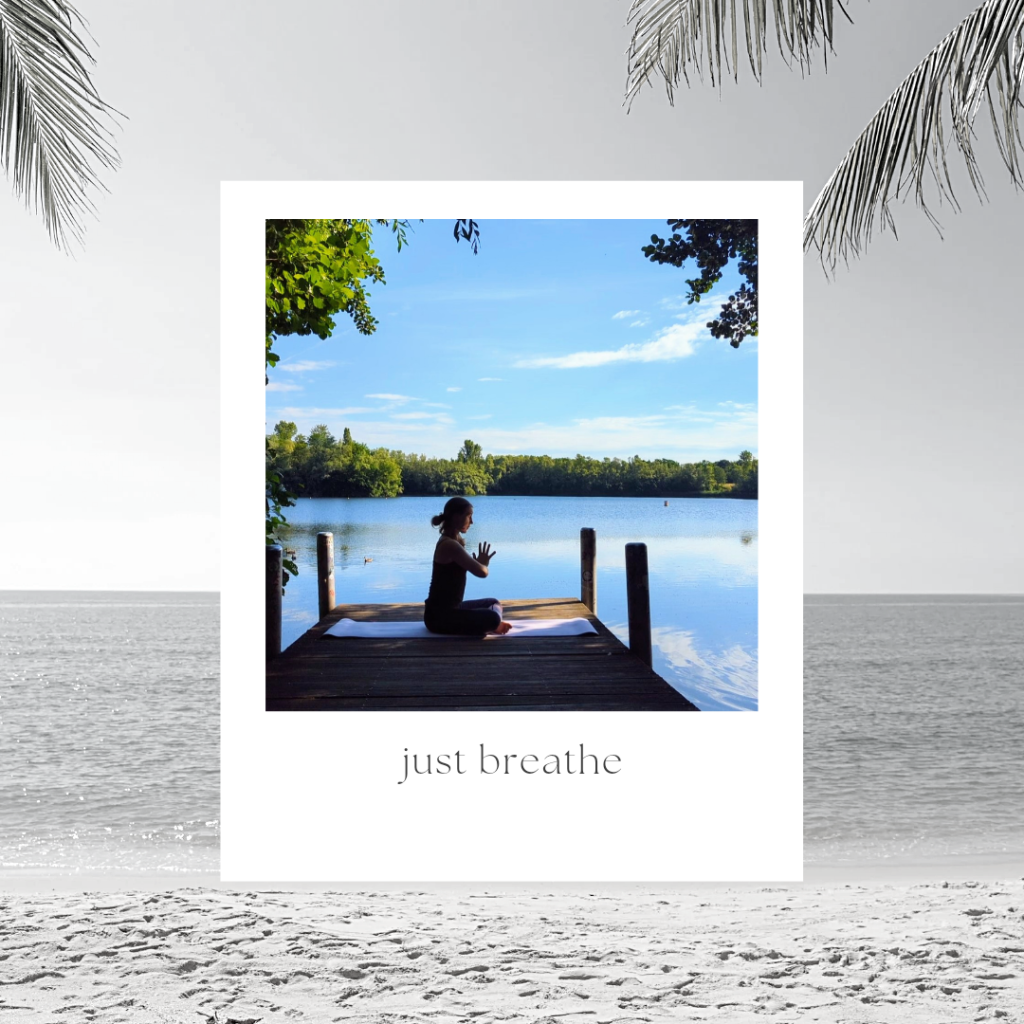In yoga, we do physical exercise while focusing on your breathing. There are different breathing techniques, which describe Pranayama; prana = energy and yama = control. So in other words Pranayama means controlling your breath. Techniques include
- victorious breath (ujjayi)
- female honeybee humming breath (bhramari)
- alternate nostril breathing (nadishodhana)
- bellows breath (bastrika)
Pranayma means you focus on your breathing and control your breathing by inhaling, holding and exhaling following specific timing, duration and frequency.
You can include pranayama techniques into your physical yoga practice or start practising in the most fundamental asana (pose) seated and focus solely on your breathing to connect body and mind. Pranayama sequences during your physical practice will also enable you to sit during meditation with more ease.
What are the benefits of Pranayama?
Studies have shown that Pranayama has a positive effect on these five health benefits:
- Reducing stress levels: During Pranayama an increased oxygen intake flows through your muscles and nervous system which impacts your organs, brain and nerves.
- Impacting high blood pressure: As pranayama techniques have an impact on your nervous system helping to reduce stress levels it can also help to reduce the risk of hypernation.
- Benefiting your lung function: While practising breathing exercises, deep and intense breathing also helps to strengthen your chest muscles and core muscles around your rib cage impacting positively your lung function.
- Improves cognitive function: The oxygen boost also benefits brain cells. Therefore, having a positive impact on the auditory and sensory memory, improving the cognitive performance.
- Reducing anxiety: Studies have shown that practicing pranayama also impacts the activity of brain regions involved in emotional processing, particularly the amygdala helping control emotions like fear, pleasure or anger.
The quality of your breath defines the quality of your life – breathe.
Here are the four breathing techniques and how to practice each.
- victorious breath (ujjayi)
Practicing the Ujjayi breathing techniques will respond to your Crown Chakra (Sahasrara Chakra) , Third Eye Chakra (Ajna Chakra) and Heart Chakra (Anahata Chakra)
Ujjayi breathing is also called the psychic breath. For practicing, close your mouth, inhale with control and concentration through ida (left nostril) and pingala (right nostril) so that the breath is felt from the throat to the heart and produces a sonorous sound. In this practice you are watching your breath with full awareness; by simply breathing focused, deep and intense, you are increasing concentration, and you can feel warmth through your body.
“Ujjayi Pranayama is a balancing and calming diaphragmatic breathing, which increases oxygenation and builds internal body heat.” – Krishnamacharya
Ujjayi breathing can be practiced in a seated pose, standing or during sequences.
Elements: thought, light, air
- female honeybee humming breath (bhramari)
The Bhramari breathing technique helps to releax and release stress. In Sanskrit bramar means humming bee. For practicing the honeybee breath, take a seated pose, make yourself comfortable in a meditative, seated pose such as half Lotus (Padmasna). Keep your spine straight, bringing awareness to your normal breathing and feel your body relaxing. Relax your facial muscles and focus your breathing through both nostrils. Bring your hands in Jnana Mudra and place the thumbs covering the ears, blocking sound and put your remaining fingers on your eyes covering the vision. Inhale through both nostrils; on your exhale, create a humming sound like that of a bee like Mmmmmmm, keeping your mouth closed.
Honey bee humming breath (bhramari) is most often done at the end of the physical yoga practice.
Responding chakras Crown Chakra (Sahasrara Chakra) , Heart Chakra (Anahata Chakra)
Elements: thought, air
- alternate nostril breathing (nadishodhana)
Nadishodana helps to releave stress and anxiety. Using the breathing technique of nadishodana helps to balance the hemispheres of the brain, the autonomous nervous system and lowers blood pressure. In Sanskrit, ‘nadi’ means ‚channel‘ and ‘shodhana’ means ‘cleaning or purifying’. The practice of nadishodhana refers to the cleansing of the various channels in the human body using the technique of breath awareness.
To practice nadishodana you breathe through one nostril at a time bringing balance to the body and mind.
Take a seated pose, breathing normally through both nostrils. Bend your index and middle fingers towards your palm while the remaining fingers stretch (tight handed). Cover your right nostril (firm pressure to block flow) with your thumb. Inhale through your left nostril, release the thumb on your right nostril and cover your left nostril with your ring finger (simultaneously), exhale through your right. Repeat this technique five to eight times. Then breath through both nostrils again, simply breathing.
Responding chakras: Third Eye Chakra (Ajna Chakra) , Throat Chakra (Vishuddha Chakra) , Heart Chakra (Anahata Chakra)
Elements: Light, Ether, Air
- bellows breath (bastrika)
Bastrika is a dynamic breathing techniques and has multiple benefits such as strengthening the respiratory system, while keeping the passage clear of toxins and blockages, improving blood circulation, helping to purify the blood, detoxifying as well as calming the mind. The nasal passage is kept clean and clear, oxygenates the blood increasing the vitality of all the organs and tissues, positive effect on digestive system and strengthens and tones the abdominal area.
Bastika in Sanskrit means bollows. Bhastrika Pranayama is basically rapid, deep, forcefully breathing. While you use your chest like that of the bellows, to get active inhalations and exhalations, in a very dynamic synchronised way
Bastika breathing techniques can be practiced in a seated orstanding pose or during physical practice.
Responding chakras: Crown Chakra (Sahasrara Chakra) , Heart Chakra (Anahata Chakra) , Solar Plexus (Manipura Chakra)
Elements: Thought , Air , Fire
* if you have not practiced yoga/breathing techniques before; please consult a qualified yoga teacher.
